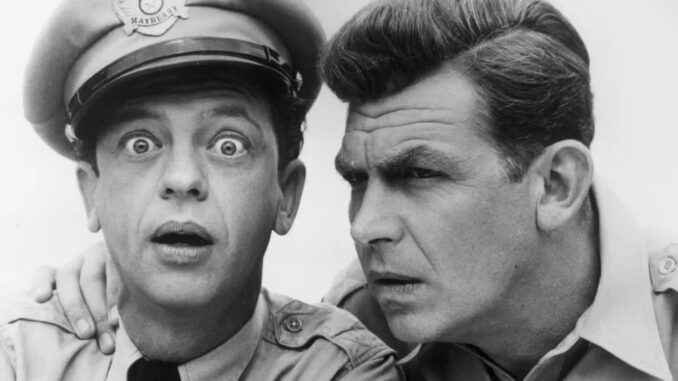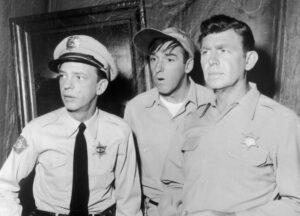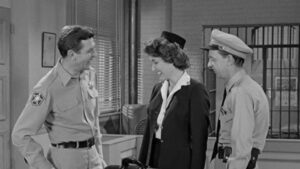
“The Andy Griffith Show” is more than just a nostalgic trip to Mayberry; it’s a masterclass in character development and storytelling. The show, which aired from 1960 to 1968, was renowned for its charming cast and heartwarming stories. But what happens when a beloved character leaves the show? Surprisingly, instead of faltering, the series cleverly pivoted, allowing a side character to step into the spotlight. This article delves into how the show made this transition seamless and engaging, maintaining its popularity even after a significant change.
The Departure of a Fan Favorite
The Impact of Actor Departure
When a major character exits a show, it can leave a gaping hole in its fabric. For “The Andy Griffith Show,” this moment came when Don Knotts, who played the lovable Deputy Barney Fife, decided to leave the series after its fifth season. His departure was a significant blow; fans adored his quirky antics and comedic timing. The question arose: how could the show continue to thrive without one of its most beloved characters?
The Initial Reaction from Fans
Fans were understandably anxious. How could the show possibly replace Barney’s unique charm? Would the series lose its humor and heart? These concerns loomed large as viewers braced for the transition. However, the show’s creators had a plan that would surprise everyone.
A New Direction for a Side Character
Introducing a Fresh Perspective
With Knotts’ departure, the show’s writers had the opportunity to explore new avenues. Instead of attempting to replicate Barney Fife, they shifted focus to a less prominent character: Howard Sprague, played by Jack Dodson. Howard was initially portrayed as the town’s “fix-it” man, known for his practical skills and awkward personality.
Why Howard Sprague?
Howard Sprague was an interesting choice. Although he was a side character, his quirky personality and interactions with other characters offered a fresh dynamic. The writers recognized that he had untapped potential and could serve as a new source of humor and warmth in the show. This pivot allowed the series to maintain its comedic tone while introducing new storylines.
Character Development: Howard Sprague’s Transformation
From Side Character to Central Figure
As Howard began to take on a more prominent role, the writers crafted storylines that showcased his personality more deeply. He transformed from the town handyman to a fully realized character, often finding himself at the center of humorous situations. This character evolution was critical in keeping the audience engaged.
Howard’s Quirks and Antics
Howard’s quirks became a staple of the show. His interactions with other characters, particularly with Andy and the ever-curious Aunt Bee, added layers of comedy and relatability. Viewers found themselves chuckling at Howard’s awkwardness and earnestness, making him a beloved figure in his own right.
Maintaining the Show’s Heart
Balancing New Dynamics with Classic Themes

Despite the changes, “The Andy Griffith Show” managed to preserve its heart. The essence of the show—community, friendship, and moral lessons—remained intact. The writers skillfully wove Howard into existing narratives while also allowing him to shine in new storylines.
The Role of Andy Taylor
Andy Taylor, played by Andy Griffith, continued to be the heart of the show. His gentle wisdom and kindness provided a strong foundation as new dynamics unfolded. The chemistry between Andy and Howard, albeit different from that with Barney, still resonated with viewers, reminding them of the importance of friendship and understanding.
Viewer Reception and Impact
How Audiences Reacted to the Change
Initially, some viewers were skeptical about Howard’s rise. However, as the season progressed, audiences began to warm to him. The show’s clever writing and Dodson’s performance won over fans, proving that a side character could step into a more significant role without losing the show’s charm.
The Legacy of Howard Sprague
Howard Sprague became an iconic character in his own right, contributing memorable moments and quotes that fans still cherish. His character development exemplified how a show could adapt and evolve while honoring its roots. The successful pivot not only kept the show alive but also introduced a new wave of humor and warmth.
Lessons Learned from the Transition
Embracing Change in Storytelling
“The Andy Griffith Show” teaches us that change can be a positive force in storytelling. By embracing the unexpected and pivoting with creativity, shows can adapt to challenges while keeping audiences engaged. The transition from Barney to Howard highlights the importance of flexibility in character development.
Character Potential: The Key to Success
The pivot also illustrates the significance of recognizing character potential. Sometimes, the best stories lie within characters who haven’t yet taken center stage. By allowing Howard to flourish, the show expanded its narrative possibilities and enhanced its comedic repertoire.
Conclusion
“The Andy Griffith Show” remains a timeless classic, in part due to its ability to adapt and innovate. The clever pivot from Barney Fife to Howard Sprague exemplifies how thoughtful character development can enrich a series, even after a beloved character departs. By embracing change and celebrating the unexpected, the show not only survived but thrived, leaving an indelible mark on television history.
FAQs
1. Why did Don Knotts leave ‘The Andy Griffith Show’?
Don Knotts left the show to pursue a film career and other opportunities, feeling he had accomplished what he wanted with the character of Barney Fife.
2. How did the audience react to Howard Sprague’s character?
Initially skeptical, the audience gradually embraced Howard Sprague, appreciating his unique humor and quirks.
3. What was the impact of Howard Sprague on the series?
Howard’s character added new dynamics to the show, allowing for fresh storylines and maintaining its comedic essence after Knotts’ departure.
4. Can you explain the transition from Barney to Howard in simpler terms?
After Barney left, the show focused on Howard, who had previously been a side character. The writers developed his character, making him funnier and more central to the plot.
5. What lessons can modern shows learn from ‘The Andy Griffith Show’?
Modern shows can learn the value of character development, the potential in side characters, and how to adapt to changes while preserving the show’s core values.
